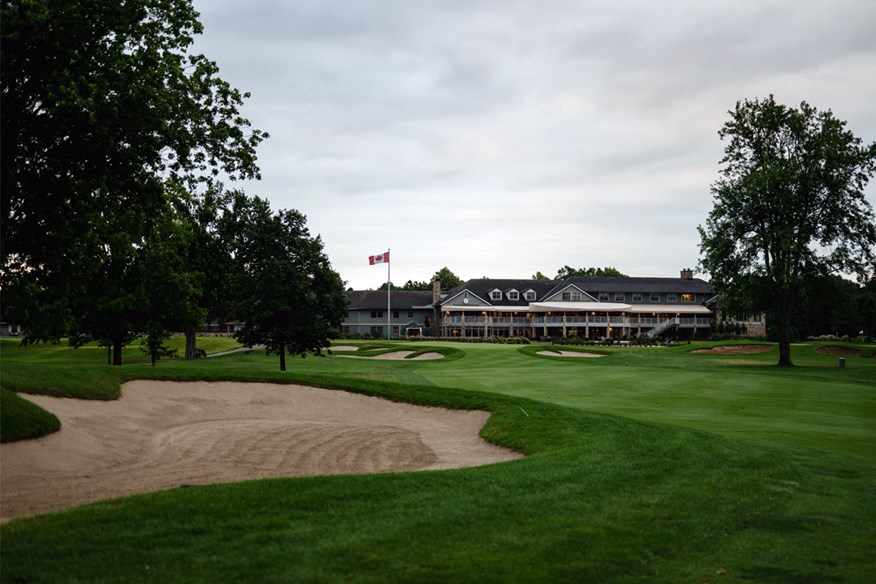Presidents Cup 2024: Royal Montreal Golf Club hole-by-hole course guide
Last updated:
Everything you need to know about Royal Montreal Golf Club, home of the 2024 Presidents Cup.
Royal Montreal, the oldest golf club in North America, will host the Presidents Cup in 2024 for the second time in history.
The Presidents Cup’s previous visit to Royal Montreal was in 2007, when the United States and captain Jack Nicklaus defeated Gary Player and his International Team by a score of 19.5-14.5.
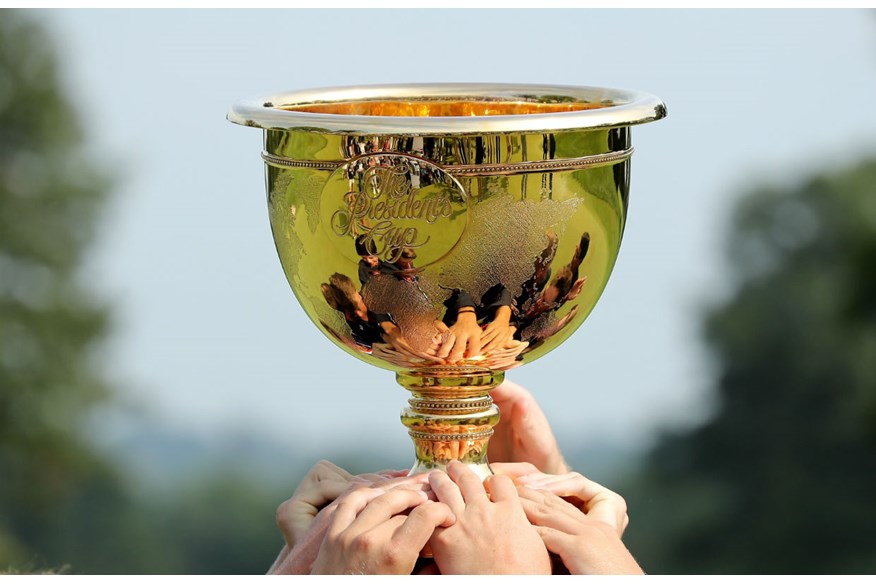
Royal Montreal Golf Club – the history
The club was founded in 1873 and given permission to use the ‘Royal’ prefix by Queen Victoria in 1884.
Originally a nine-hole layout, the club has moved location twice. First in 1896, and then again in 1959 to its current home in Île-Bizard, Quebec. 45 holes were designed by course architect Dick Wilson, the man who designed Bay Hill and many other highly regarded courses.
Royal Montreal has two 18-hole courses – the Red and Blue – with the latter regarded as one of the best in the world.
Royal Montreal hosted the Presidents Cup in 2007 and the Canadian Open in 2014.
Royal Montreal Golf Club – hole-by-hole course guide
1st
Par 4 | 449 yards
This hole is a slightly uphill dogleg to the left. The left side of the fairway is bunkered and a long carry at 320 yards. The green is kidney-shaped, narrowing at the front. The back left plateau of the green slopes away from incoming approach shots.
2nd
Par 4 | 385 yards
This hole is a dogleg right, slightly downhill, and can play as a drivable par 4. The green sits perpendicular to the fairway and has two dramatic spines that divide it into three distinct areas. A deep bunker guards the left side of the green, while the right side falls away sharply, demanding a very precise touch.
3rd
Par 4 | 485 yards
This is a slight dogleg right hole. A well-placed drive still leaves the player with a demanding shot to the raised three-tiered green, which is protected by deep bunkers at the left and right front. The green falls away sharply at the back.
4th
Par 4 | 501 yards
This difficult hole is an uphill dogleg left with a very narrow tee shot landing area, protected on both sides by bunkers. The player is normally hitting into the prevailing wind. The green is kidney-shaped, narrow at the front, and protected at the front left and right by bunkers.
5th
Par 3 | 227 yards
This is a very demanding par 3 that requires a very precise shot to another elevated kidney-shaped green. The pattern continues with the front portion of the green being very narrow. It is well protected by deep bunkers at the front left and right and has a pronounced spine through its left and center sections.
6th
Par 5 | 567 yards
This is the lone par 5 on the outward nine and one of only two on the Blue Course. There is the potential to hit the green in two, but the prevailing wind is generally into and/or slightly across the player’s face. The hole is a dogleg right with a generous tee shot landing area that is bunkered on both sides. The green is large and angled to the fairway. It sits on a plateau with two very deep bunkers at the front and a series of bunkers along the back. The green is relatively flat but has a demanding putting surface with a number of distinct areas.
7th
Par 3 | 153 yards
This is a deceptively short par 3. The player does not want to miss this small, well-bunkered green as they will be faced with a difficult shot from deep bunkers that protect both sides of this narrow green or be left with a challenging flop shot.
8th
Par 4 | 425 yards
This is a short, downwind hole with a dogleg left layout and a very generous landing area. This green departs from the kidney shape of most previous greens; it is round and much of the surface is not visible from the area where most players will be hitting their approach shots.

9th
Par 4 | 437 yards
This hole leads back to the clubhouse and is a slight dogleg left. The tee shot landing area is bunkered on the left side, requiring a 320-yard carry. The green is elevated, narrow at the front, and guarded by deep bunkers on both sides. The green has a pronounced spine from the middle of the back to the center. If the approach shot is not in the same quadrant of the green as the pin, a birdie is highly unlikely.
10th
Par 4 | 454 yards
A large pond comes into play down the left side of this hole, starting at 160 yards out from the green and continuing all along from there. The right side of the hole is tree-lined from the tee to the green. The green is situated on a front-right to back-left axis with a waterfall-style surface, featuring three separate areas that increase in height from the front to back plateaus.
11th
Par 4 | 483 yards
This is an uphill hole with a slight dogleg right. There is a bunker on the right side of the fairway requiring a carry of 260 yards. The right side is also treed from the tee-to-green. A very strong fairway bunker turns the hole on the left side at 310 yards. This hole will play at least the full yardage, as the prevailing wind is into the face of the player and most drives will be hitting into a gradual slope. The green is narrow at the front, well-bunkered on both sides and has a spine from the back through the middle, making it essential for an approach shot to be in the same area as the pin.
12th
Par 5 | 560 yards
This par 5 plays slightly downhill and most often downwind. The landing area is generous and protected on the left side by a carry bunker at 280 yards, and on the right by a series of bunkers at 290 to 320 yards from the tee. The hole turns to the left from the landing area. The fairway dips from this point, rising to a distinct plateau at the green. The hole is reachable in two but is protected on the left side by steep bunkers and has a strategic collection area on the right side. The green moves sharply from back to front and away from the collection area. Any pin location on the right side of the green will require a cautious approach.
13th
Par 3 | 224 yards
This downhill par 3 is backed by a stand of mature Sugar Maples. The green has three distinct plateaus with very demanding back pin positions. The front of the green is narrow and well-bunkered on both sides.
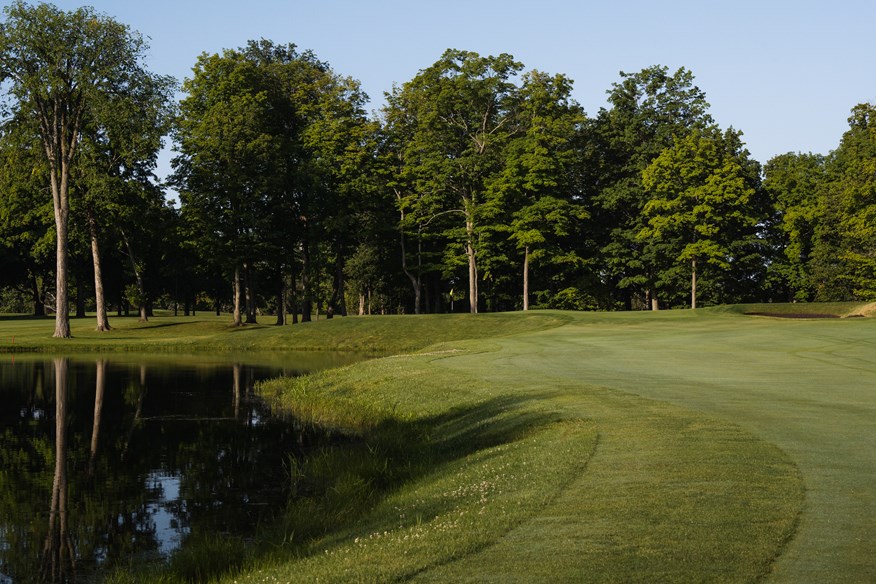
14th
Par 4 | 400 yards
This hole has a large pond on the left side of the fairway, stretching from the green halfway back to the tee. The right side of the fairway has a mature Maple forest from tee to green. The fairway narrows into a very tight landing area that is bunkered on the right side. Most players will lay up off the tee with a mid to long iron. The green is very narrow with three very distinct sections, with water a factor all along the left side. The front portion of the green is very small and bunkered on the right. This hole can be played from 300 yards, making it a drivable par 4.
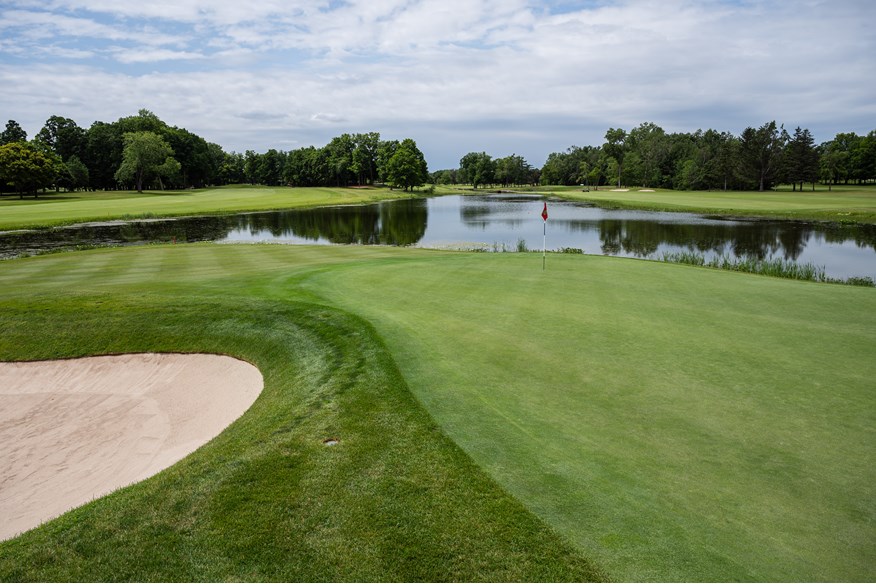
15th
Par 4 | 448 yards
This hole also has water in play as a large pond is located in front of and around the left side of the green as well as along the left side of the fairway. A driver may not be the choice off the tee as players will select a club to get them to the best angle for their approach shot to the green. The green is long and narrow with a pair of bunkers on the right side and a pot bunker on the back left between the green and the pond. The back pin placement will sit on a very small plateau and will only be attacked by the most confident players.
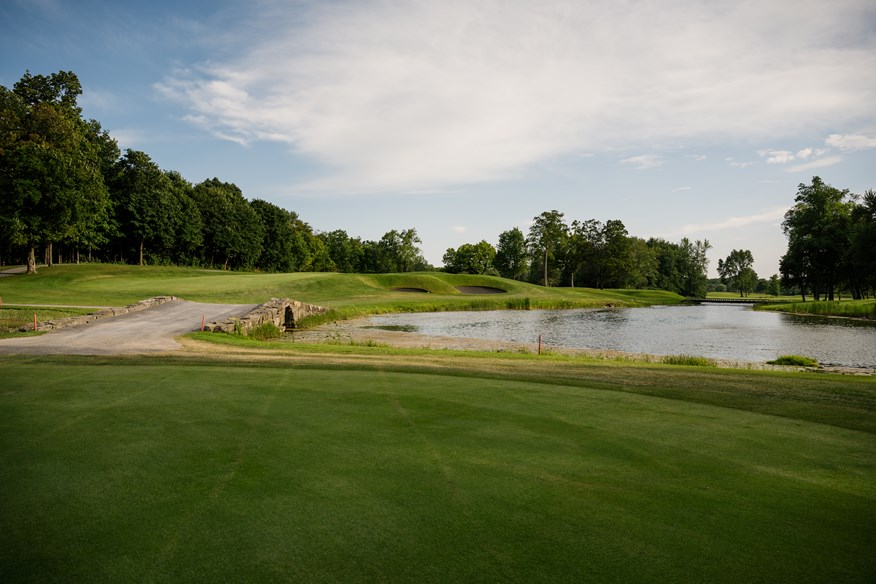
16th
Par 4 | 458 yards
The hole has a large pond all along the left side. Again, a driver may not be the choice off the tee as accuracy is essential. The second shot is played over water to an elevated green which is protected on the right side by an intimidating, ‘monster’ bunker with a collection area on the left.
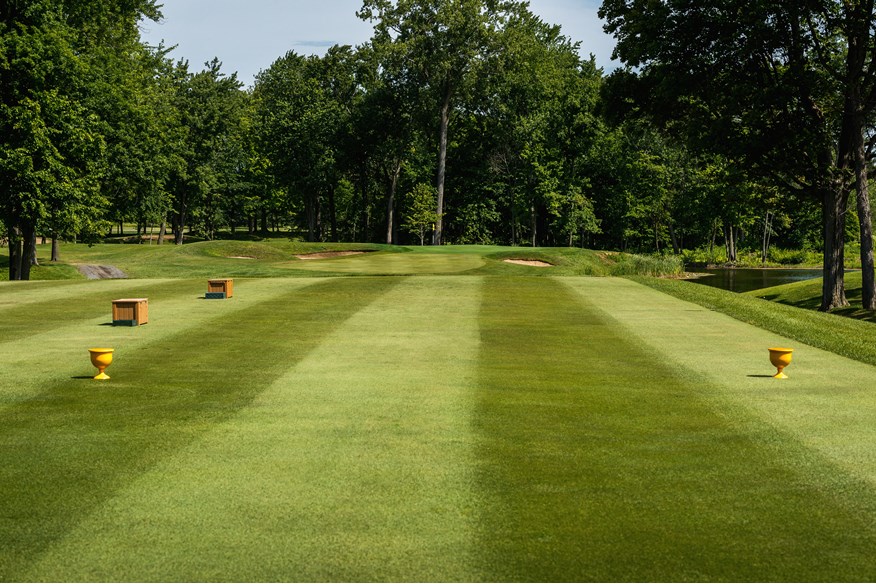
17th
Par 3 | 157 yards
The tee shot is played over a pond that extends down the right side of the green and beyond. The prevailing wind will be a factor as it blows across this hole towards the pond. There is no room for error between this narrow green and the water. The green is bunkered on the left side and has a spine through the middle from back to front.
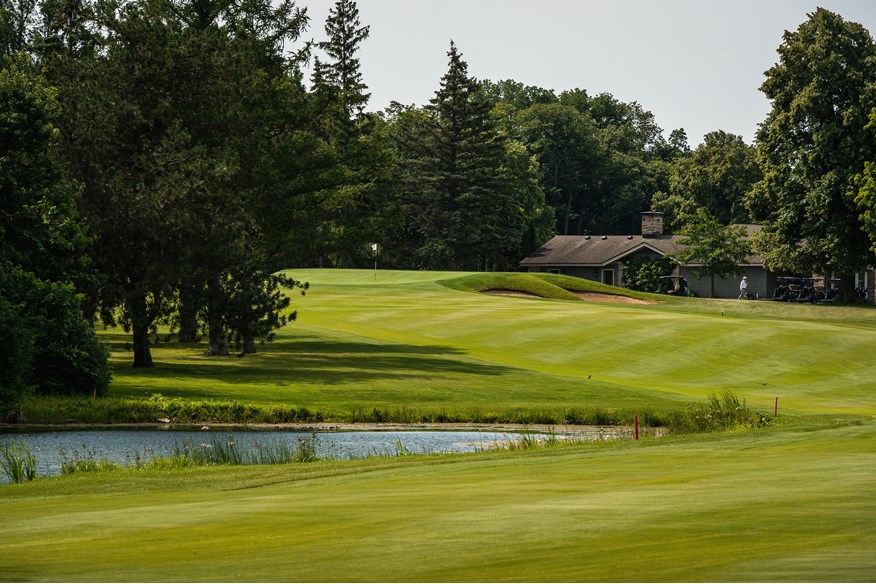
18th
Par 4 | 466 yards
This is a very strong hole that plays to the most challenging green on the Blue Course. Water is a factor off the tee and all down the left side. The tee shot landing area is narrow and bunkered on the right. Only the longest of hitters could consider driving the pond, and only with a favorable wind. The green is elevated with a front-left to back-right configuration. The back plateau of the green is small and relatively flat but the front portion of the green has a steep slope forward which is defended by an imposing bunker. There is no room for error with the approach shot to this green.
-
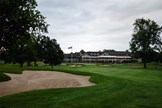 Royal Montreal Golf Club is host of the 2024 Presidents Cup
Royal Montreal Golf Club is host of the 2024 Presidents Cup
-
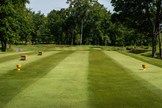 The 17th hole at Royal Montreal for the Presidents Cup
The 17th hole at Royal Montreal for the Presidents Cup
-
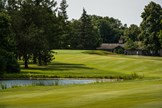 The 18th hole at Presidents Cup course Royal Montreal
The 18th hole at Presidents Cup course Royal Montreal
-
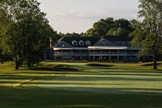 The 9th hole at Royal Melbourne for the Presidents Cup
The 9th hole at Royal Melbourne for the Presidents Cup
-
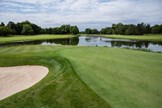 The 15th hole at Presidents Cup course Royal Melbourne
The 15th hole at Presidents Cup course Royal Melbourne
-
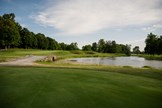 The 16th hole at Presidents Cup course Royal Melbourne
The 16th hole at Presidents Cup course Royal Melbourne
-
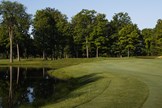 The 14th hole at Presidents Cup course Royal Montreal
The 14th hole at Presidents Cup course Royal Montreal
